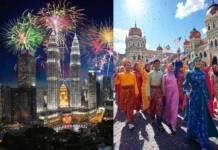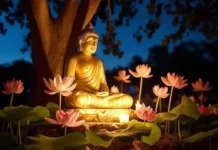Baisakhi, also spelled Vaisakhi, is a vibrant and deeply meaningful festival celebrated primarily in Punjab and by Sikh and Punjabi communities worldwide. It marks the beginning of the Sikh New Year, the spring harvest, and the formation of the Khalsa Panth in 1699 by Guru Gobind Singh. The festival brings together spirituality, community, and cultural pride in an energetic mix of rituals, dance, food, and devotion.
From fields ripe with wheat to Gurdwaras glowing with devotion, Baisakhi is more than a date—it’s a symbol of identity, gratitude, and renewal.
Key Details of Baisakhi Festival
| Aspect | Details |
|---|---|
| Event Name | Baisakhi (Vaisakhi) |
| Significance | Sikh New Year, harvest festival, formation of Khalsa |
| First Celebrated | 1699, with the establishment of the Khalsa by Guru Gobind Singh |
| Main Celebrated In | Punjab, India; Sikh and Punjabi communities worldwide |
| Key Activities | Gurdwara visits, Nagar Kirtan processions, Langar, folk dance (Bhangra/Gidda) |
| Traditional Foods | Pinni, Lassi, Sarson da Saag, Makki di Roti, Sweets like Jalebi |
| Symbols | Nishan Sahib, Khalsa emblem, Guru Granth Sahib |
History of Baisakhi
Baisakhi has ancient roots as a harvest festival, but its historical significance for the Sikh community began in 1699 when Guru Gobind Singh, the tenth Sikh Guru, founded the Khalsa Panth at Anandpur Sahib. He called upon his followers to dedicate themselves to justice, equality, and selflessness.
On this day, the first five beloved ones (Panj Pyare) were initiated into the Khalsa, forming the spiritual and martial core of the Sikh identity.
Additionally, Baisakhi is remembered for the tragic Jallianwala Bagh Massacre in 1919, when British troops opened fire on peaceful protestors in Amritsar during Baisakhi, galvanizing India’s freedom struggle.
History of Baisakhi
Baisakhi has ancient roots as a harvest festival, but its historical significance for the Sikh community began in 1699 when Guru Gobind Singh, the tenth Sikh Guru, founded the Khalsa Panth at Anandpur Sahib. He called upon his followers to dedicate themselves to justice, equality, and selflessness.
On this day, the first five beloved ones (Panj Pyare) were initiated into the Khalsa, forming the spiritual and martial core of the Sikh identity.
Additionally, Baisakhi is remembered for the tragic Jallianwala Bagh Massacre in 1919, when British troops opened fire on peaceful protestors in Amritsar during Baisakhi, galvanizing India’s freedom struggle.
Cultural Celebrations
Traditional Dances
Baisakhi celebrations are incomplete without the energetic performances of Bhangra and Gidda. These traditional dances, characterized by vibrant costumes and rhythmic movements, are performed in fields, villages, and community gatherings, symbolizing joy and gratitude.
Festive Foods
The culinary delights of Baisakhi include:
- Pinni: A sweet made from wheat flour, ghee, sugar, and dry fruits.
- Besan Ki Barfi: A gram flour-based dessert flavored with ghee and garnished with pistachios.
- Lassi: A refreshing yogurt-based drink, often flavored with mango or rosewater.
- Sarson da Saag with Makki di Roti: A traditional Punjabi dish enjoyed during the harvest season.
These dishes not only tantalize the taste buds but also reflect the agricultural abundance of the region.
Global Celebrations
Baisakhi transcends regional boundaries and is celebrated by Sikh and Punjabi communities worldwide. In countries like Canada, the UK, the USA, and Australia, vibrant processions, cultural performances, and community gatherings take place, showcasing the rich heritage and unity of the diaspora.
Frequently Asked Questions (FAQs)
What is the spiritual significance of Baisakhi?
It marks the formation of the Khalsa Panth, representing courage, equality, and faith in Sikhism.
Is Baisakhi only celebrated by Sikhs?
No. It is also observed by Punjabi Hindus as a harvest festival and solar new year.
What do people wear on Baisakhi?
People wear bright traditional outfits, often with Phulkari embroidery and turbans.
What is Nagar Kirtan?
A Sikh religious procession that includes singing hymns, displays of martial arts, and community service.
Is Baisakhi a national holiday in India?
Yes, it is a public holiday in Punjab and some northern states.





























